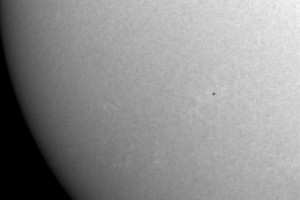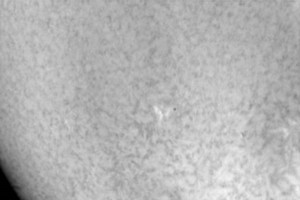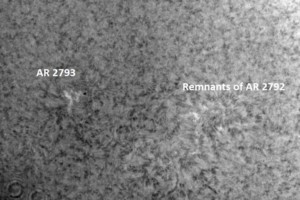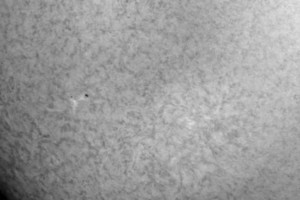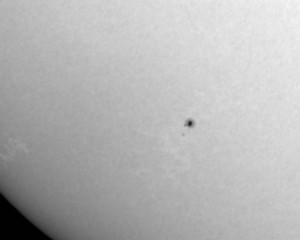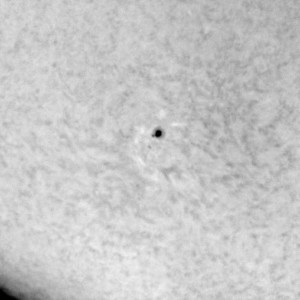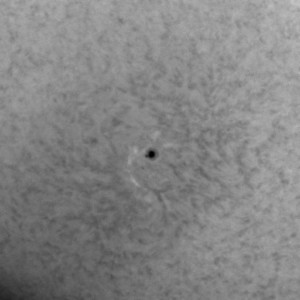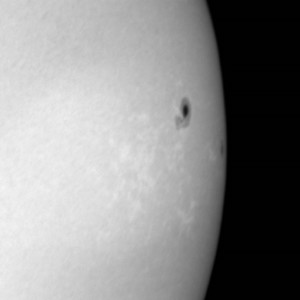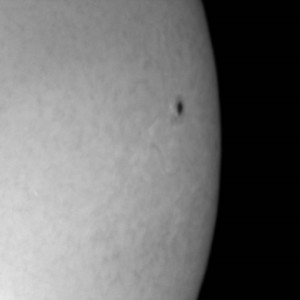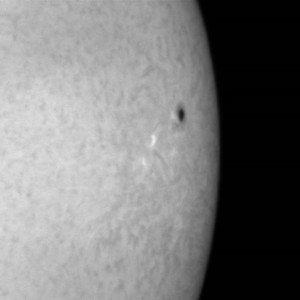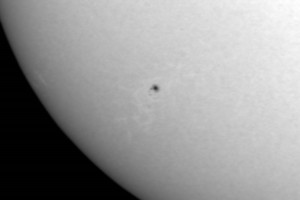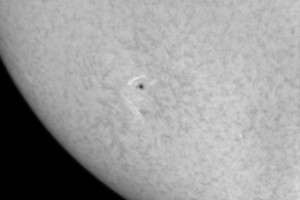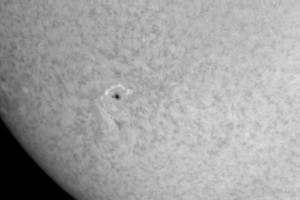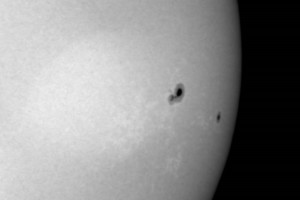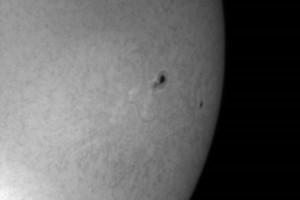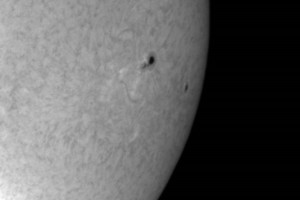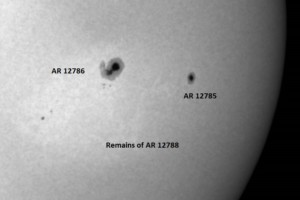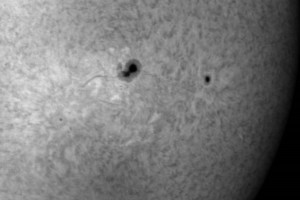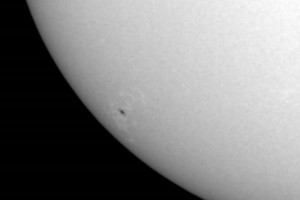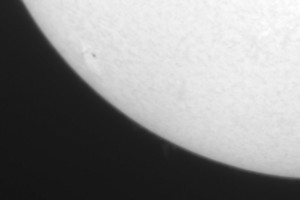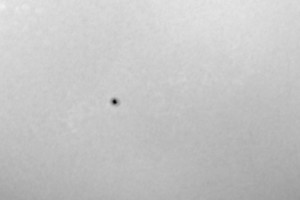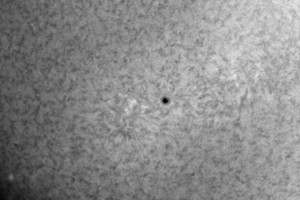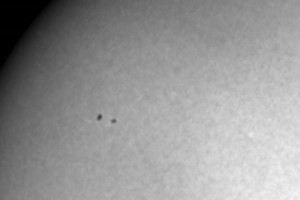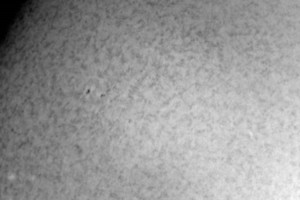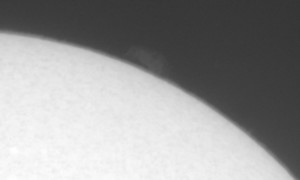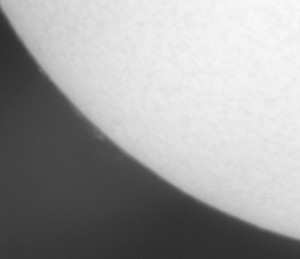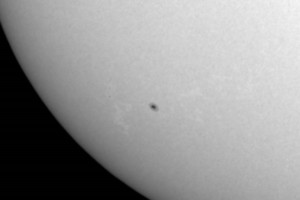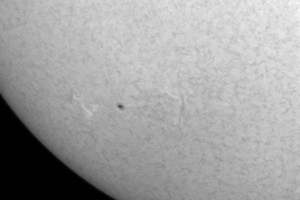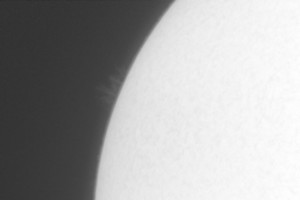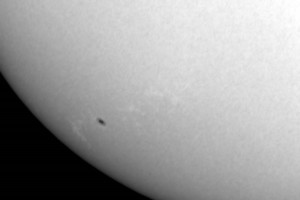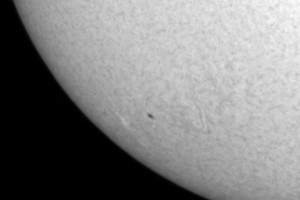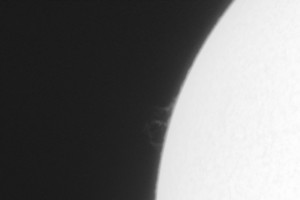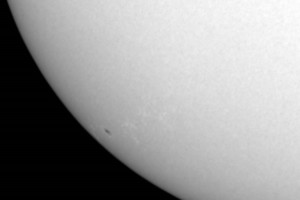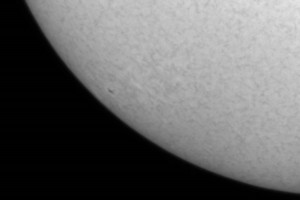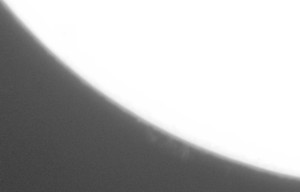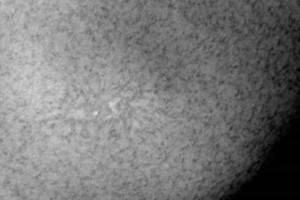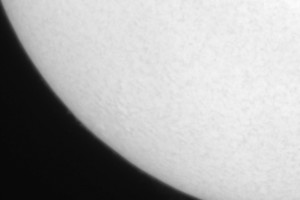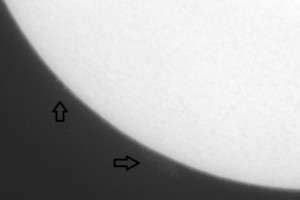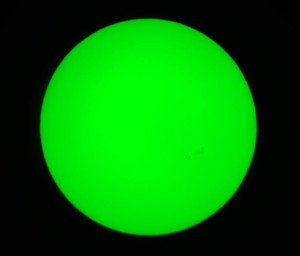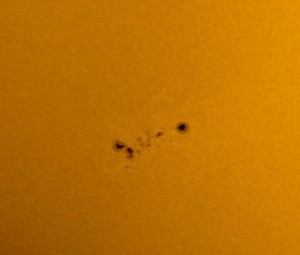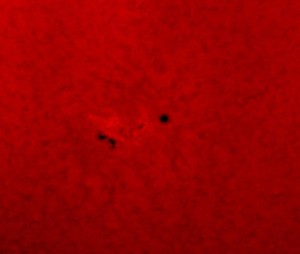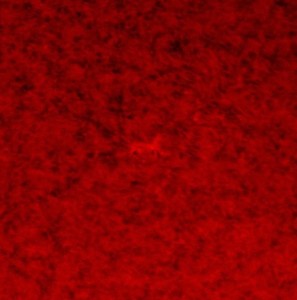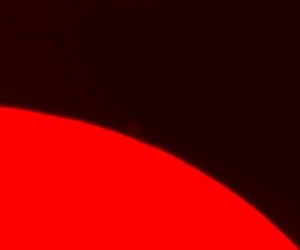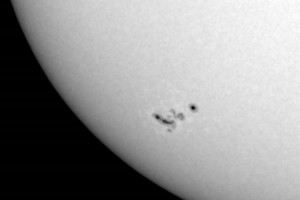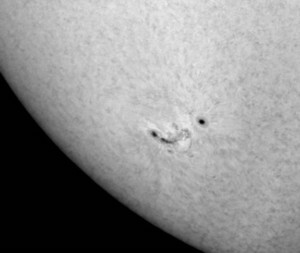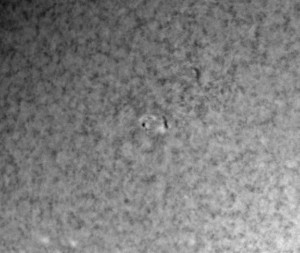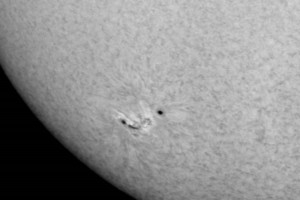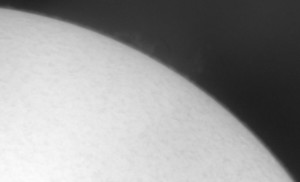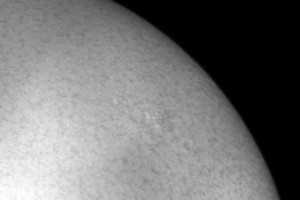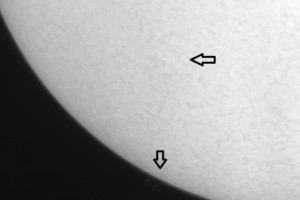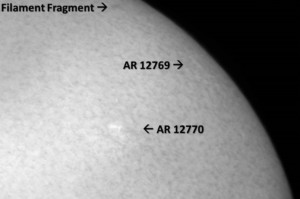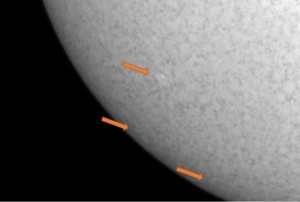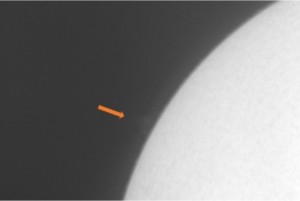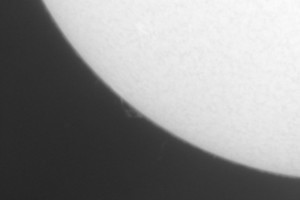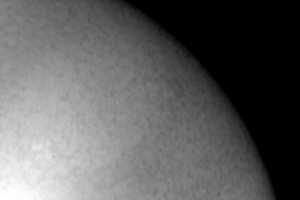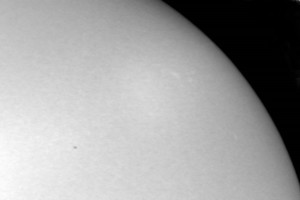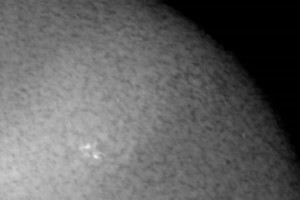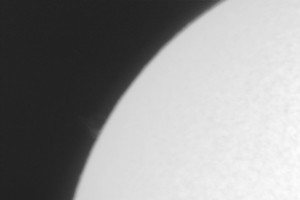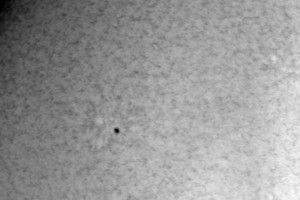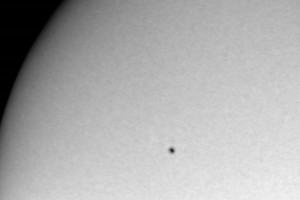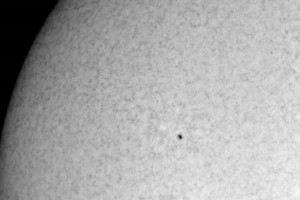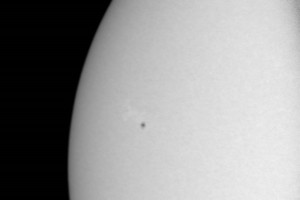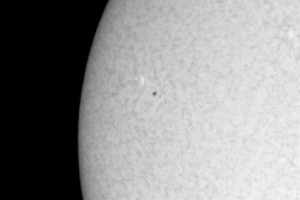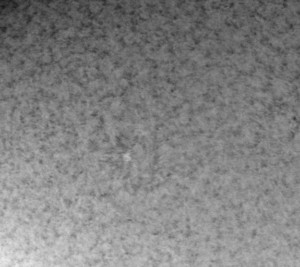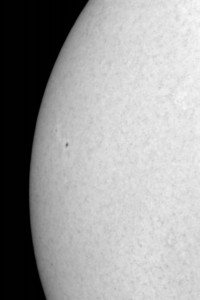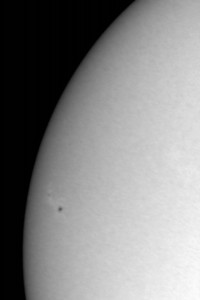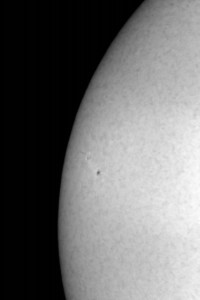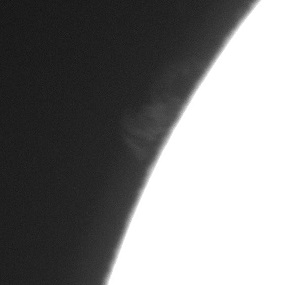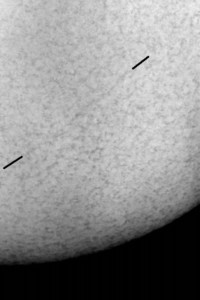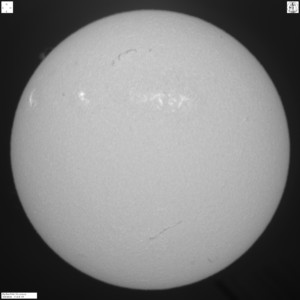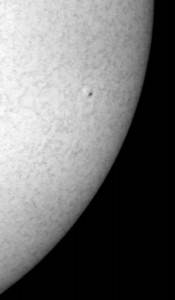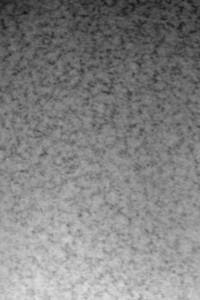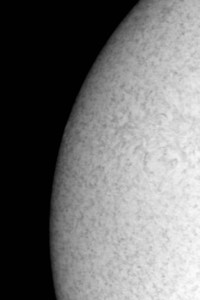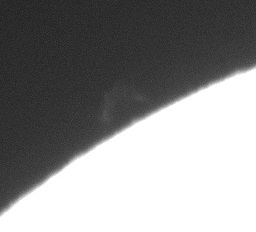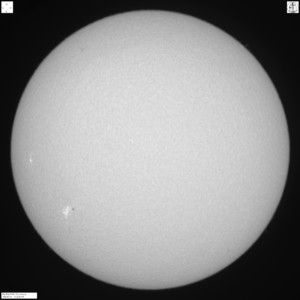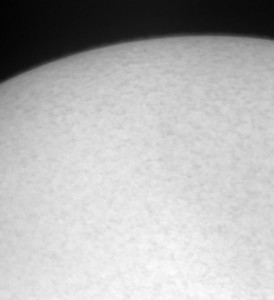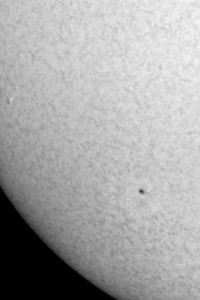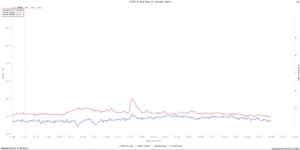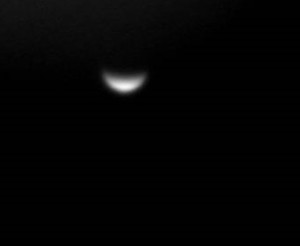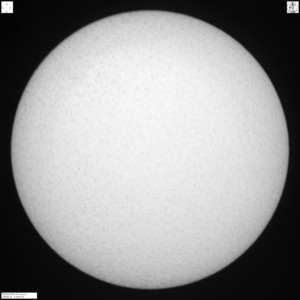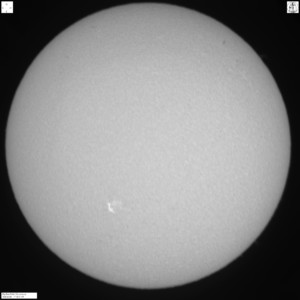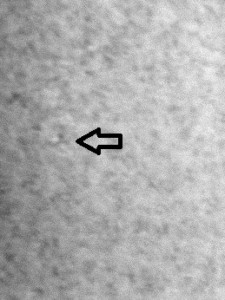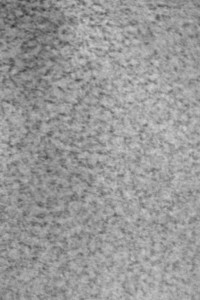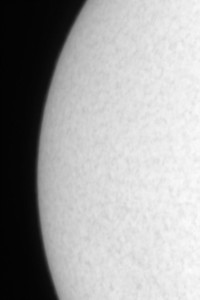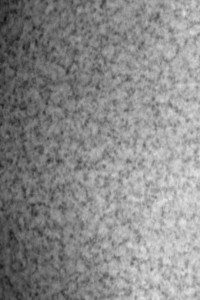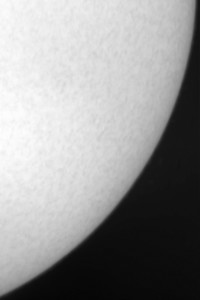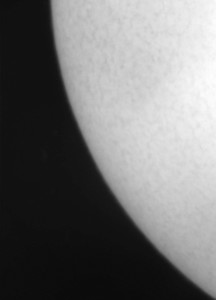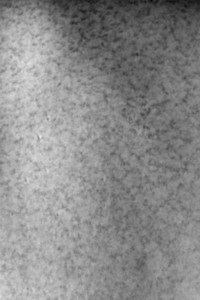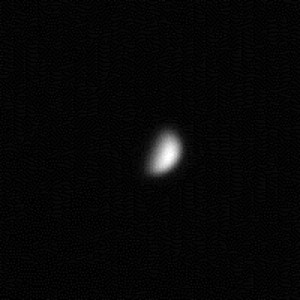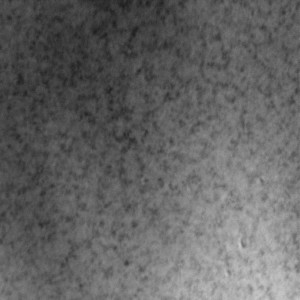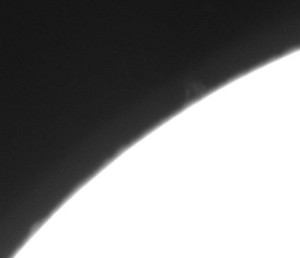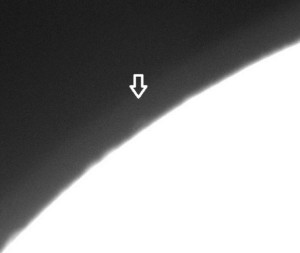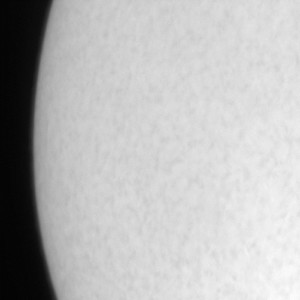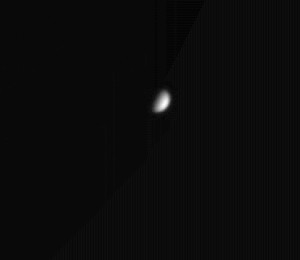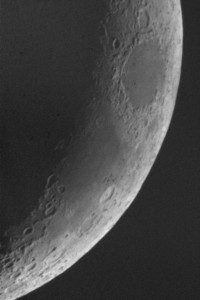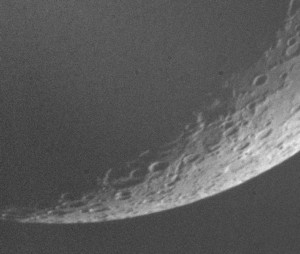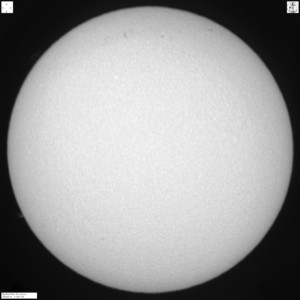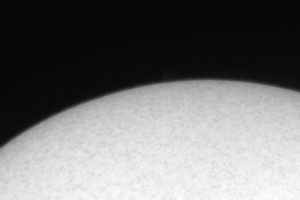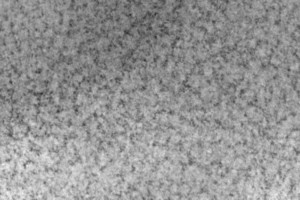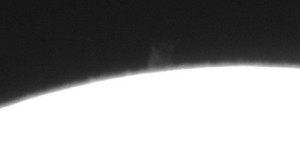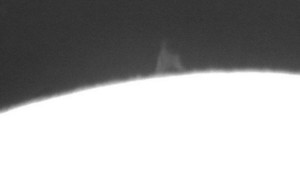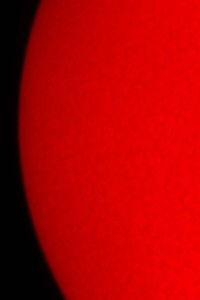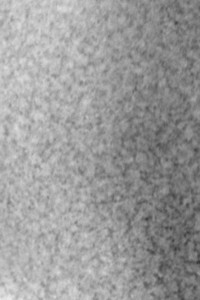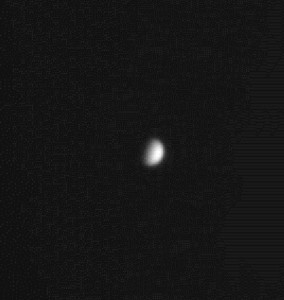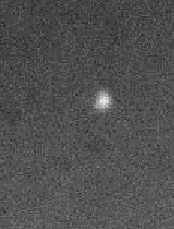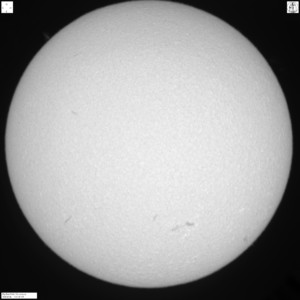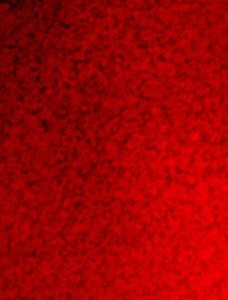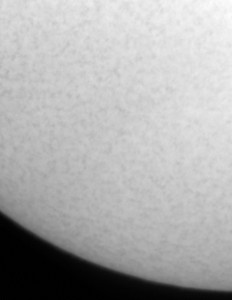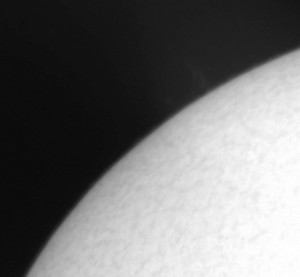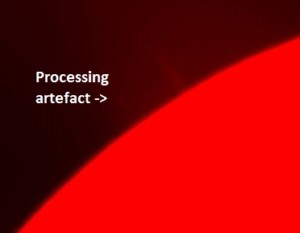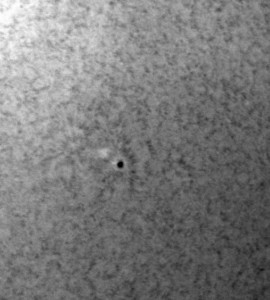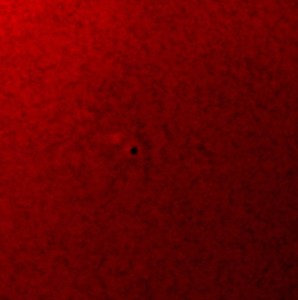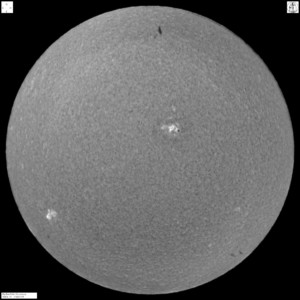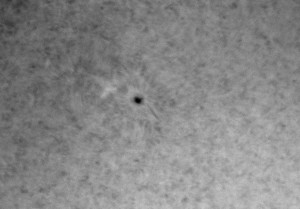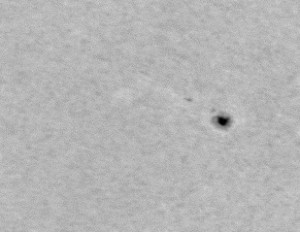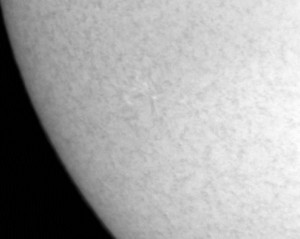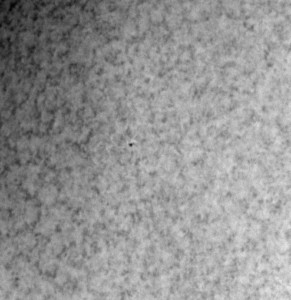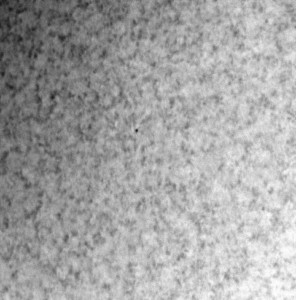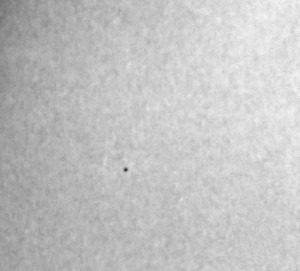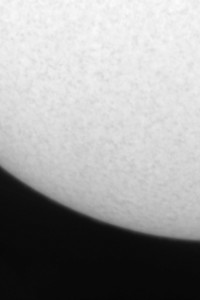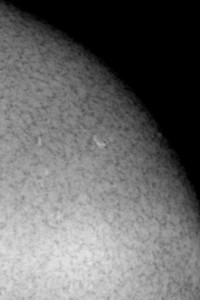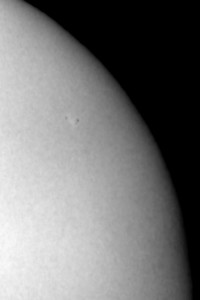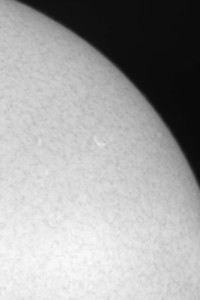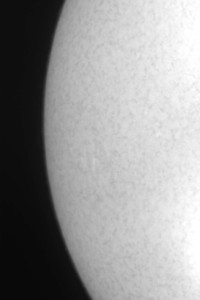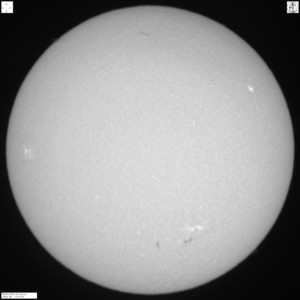Solar Images from 2020
Note: All images on this website © 2018-2021 by Brian Cudnik and Prairie View A&M Physics. All rights reserved.
The images presented on this website are archived below. This lengthening page was broken into two components by year, with the more current observations published separately.
One can monitor the Sun via several websites that provide real-time images of the Sun. The website, https://www.solarmonitor.org/, has such images in six different channels. The numbers are the NOAA designations for active regions (with the “1” at the start of the designation removed for convenience). Another website with up-t0-date information on solar activity and other goings-on in the skies is www.spaceweather.com. Additional information about the Sun’s current activity can be obtained from https://www.swpc.noaa.gov/, and real-time full-disk H-alpha images from observatories around the world can be viewed at http://halpha.nso.edu/.
A typical observing run may last from one to four hours, depending on seeing considerations, weather, and other work responsibilities, but will include active region monitoring of available active regions and the collection of frames for high-resolution solar mosaics in H-alpha. Each session includes at least one mosaic, which is a series of images made of all parts of the Sun’s disk that can later be stitched together to form a whole-disk image. At the very least, this ensures that all visible features such as prominences, filaments, and active regions (sunspot groups) are all captured in image form at least once per session. Usually observations are carried out in the late morning hours, but an additional session may occur in the mid-afternoon hours and it will include its own mosaic. If a sunspot group is expected to be active, then it becomes a main focus for observation for extended periods of time.
The solar images are recorded through a Meade 16-inch f/8 Cassegrain telescope equipped with a 0.3 Å Hydrogen-alpha filter and an SBIG STT-8300 CCD camera. The aperture of the scope is stopped to 4-7/8 inch by an energy-rejection filter, which renders the system an f/26. A neutral density filter is added to bring the sunlight intensity down by 90%. Each image is automatically dark-subtracted as it is saved and each exposure is 0.1 second long. Flat field images are taken at periodic intervals throughout the observing session and are obtained by training the telescope to focus near the center of the Sun’s disk. Five images are then taken while dithering the frame 1′ to 5′ N,S,E, and W. The idea is to try to get images that are slightly blurred (either due to seeing or scope motion) and off set from each other. A set of 30 bias images (0-second exposures with the dome closed and scope parked) are taken at the end of each observing session.
Select images are processed for further study and display. A program called MaxIM DL is used to do basic calibration (bias-subtraction and flat field correction), and the levels are adjusted for optimum display contrast. Choice images are then selected for online display. All of the images are archived in their raw FITS format, sorted by date, and backed up twice. At a later time we can mass process these and make them available for scientific use. Inquiries can be made of Brian Cudnik, at bmcudnik@pvamu.edu, or Premkumar Saganti, at pbsaganti@pvamu.edu.]
Solar images and observations made in 2021 can be accessed here.
December 17, 2020
The Sun continues to decline in activity level. The last C-class X-ray event occurred on the 14th of December, as the x-ray background decreases from B to A level. The last B-level event occurred at 13:30 UT on the 16th. Since then the X-ray background has settled into the very low activity level. Active Region 12792 has decayed to remnant plage, having lost its spots yesterday. Active Region 12793 continues to maintain itself but it is also in the process of decline. No new regions have appeared and the sunspot number has decreased from 26 (yesterday) to 12 (today). The sunspot number is equal to the number of spots plus ten times the number of spot groups. Several prominence and filament features are visible on the limb and disk of the Sun. One such example is show in the first image that depicts a faint prominence group on the southwestern solar limb. This image is cropped to cover 7′ x 9.5′ of sky and stretched to emphasize the prominences.
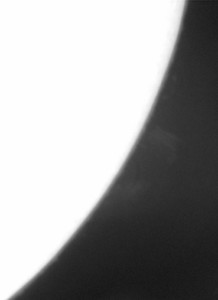 H-alpha image taken at 17:08:32 UT
H-alpha image taken at 17:08:32 UT
H-alpha line center image showing both active regions covered today and in recent days (annotated). The image was recorded at 17:34:37 UT.
December 16, 2020
The Sun is once again very quiet as the recent activity has essentially quieted down. Focus was on the pair of small active regions as they continue to march across the solar disk, carried along by the Sun’s rotation. The first group, AR 12792, is mostly dissipated with only some plage and a tiny spot left. The AR 12793 had grown some but now shows signs of decline as well. No other spotted regions are visible on the Sun’s disk, but some prominences are seen along the limb (edge) of the Sun in several places. Images were all made in H-alpha line center light under mainly clear skies and good seeing.
The above image shows the only active regions currently visible on the Sun’s disk, AR 12792, just right and below center; and AR 12793, center-left with the larger dark spot. This image was captured at 21:04:29 UT and spans 14.5′ x 9.6′. The three prominence images below are each 9.5′ squared.
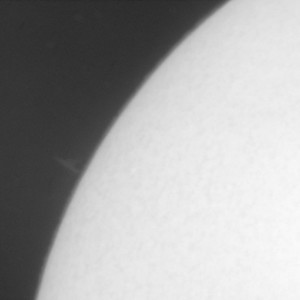
Prominence on the northeast limb as imaged at 21:19:03 UT. |
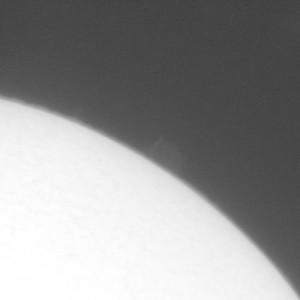
Another prominence on the northwest limb, as imaged at 21:14:19 UT. |
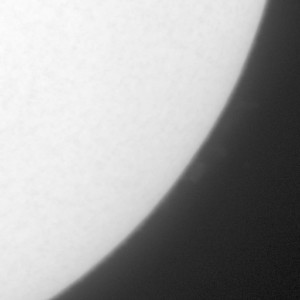
Still more prominence activity on the southwest limb, at 21:25:11 UT |
December 14, 2020
Solar activity has been mainly low for the last 10 days, with AR 12790 mostly quietly rotating across the Sun’s visible disk. It was the source of a C7 flare that peaked at 16:32UT on December 7. The region rotated out of view on 12 December, while the next small region rotated into view on the Sun’s southeast limb. This region remains small and is designated AR 12792. It did sport a C4 flare at 14:37 UT on 14 December. The main focus was AR 12792, which is shown in the below off-band and on-band images, taken about 40 minutes apart. Also, toward the left edge of each 9.5′ x 9.5′ image is another small spot group.
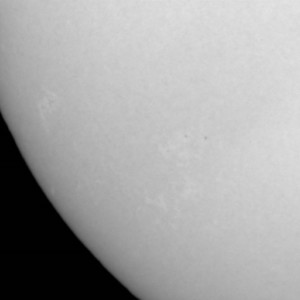
AR 12792 (right of center) as imaged at 21:42:21 UT in this continuum view. |
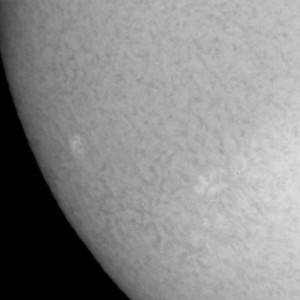
AR 12792 (lower right of center) and possibly AR 12793 (left) as imaged in this H-alpha view at 22:20:46UT. |
December 4, 2020
The Sun continues to quiet down some but there has been a regular occurrence of B-class and (occasionally) C-class flare events, with AR’s 12786 and 12790 being the sources. These were monitored for a short time today, with one of the flares being imaged during part of its evolution. The complex of active regions 12785 and 12786, with plage region 12788, are now becoming harder to observe as the Sun begins to carry them out of view due to rotation. The region 12790 is moving into better view, but all three spotted regions are in slow decay, being of Zurich class H and magnetic type alpha. Nonetheless, some low-level activity does persist with these regions.
December 3, 2020
Things have quieted further on the Sun as the current parade of active regions in the Sun’s southern hemisphere continues. We are following three spotted active regions and three former active regions, designated as H-alpha plages without spots. The two active regions NOAA 12785 and 12786 are mostly benign groups with Zurich classes of Hsx and Hkx, respectively. Each has alpha magnetic type. This indicates that they are in a state of decay and simplification and should continue to decline as they rotate off the visible disk of the Sun. Along with this pair of active regions is plage region 2788. The region 12786 covers an area of 370 millionths, down from 1000 a week ago. Active region 12790 is a bit more complex, with a beta magnetic type and Zurich class Cao. This region, and region 2786 have been producing very occasional C-class and B-class flares. None were observed today.
The series of images below show each of the active regions of interest. The top row shows AR 12790 at three points during the 4 hour observing run today. The bottom row depicts AR 12786 throughout the day. The first of each is an offband/white light proxy of each region; the second and third were obtained in the light of H-alpha line center. North is up, east left in each 14.5’x9.6′ image.
As we continue to refine the observing program at the Solar Observatory, we have decided to select the active region with the most complex magnetic type and follow that region for most of the observing time. This records changes on minutes- to hours- time scales. For other regions present on the Sun at the same time, we will follow them about once per hour to follow their evolution. The images above show how each region changed over a 3.5 hour period. Note subtle changes in the presence/absence of small filaments and other features, such as bright plage features and such. Small irregularities that are not sun-like are artefacts of the image processing.
December 1, 2020
Since the last session ten days ago, the Sun experienced a significant uptick in activity. The small regions imaged immediately below have since rotated out of view (AR 12783) or decayed (AR 12784) but a parade of new active regions has rotated onto the solar disk and is in the process of being carried across the visible disk by the Sun’s rotation. The region NOAA 12786 became the largest active region in several years, spanning 1000th of a solar hemisphere (most that we have observed thus far have areas in the 10’s to 100’s of solar hemispheres) on 26 November. It has shrunk to 590 with 17 individual spots (the spot number has been steady around 18 the last several days). The seeing conditions were too poor to open up on 30 November but improved greatly for today’s session.
Flaring activity has been limited to occasional C-class events, but a major flare was detected by Earth-orbiting satellites via the X-ray environment. The Solar Dynamics Observatory captured this extreme ultraviolet video of this M4.4 flare, which happened just over the edge of the Sun. Two days later, a humble-looking spot rotated into view, AR 12790, which is imaged below. This seemed to be the source of the flare, which was likely much bigger (in the X-category) were it not for the Sun blocking much of its energy. AR 12790 has not bee very active since it became visible to Earth-bound observers.
November 29 was a day when the Sun truly looked like it was in active mode. NOAA’s Space Weather Prediction center website has an update and summary of the active sun of late November. Information and images can be found at https://www.swpc.noaa.gov/news/solar-cycle-25-activity-update-nov-dec-2020. This website also has a lot of information about space weather, geared toward the public, and is a valuable resource for solar observatories to use to plan their operations.
November 21, 2020
Another short observing session, with regular cloud interference (partly cloudy conditions) with main focus being the existing active regions and larger prominences. A new active region, to be labeled 12784, has appeared in the Sun’s northern hemisphere. The GOES X-ray flux plot shows some activity over the last two days. However, there are no obvious signs of such activity during our short session. Except for the prominence images, the frames cover 9.6×14.5 arcminutes of the sky; the prominence frames are smaller and “zoomed in” to reveal more detail.
November 19, 2020
Solar activity levels remain low with the occasional minor flare. An X-ray class B1 flare peaked at 17:06 UT while we were observing and may have been captured, in part, as it erupted from the trailing end of AR 12783. We continue with daily morning observing sessions, a sort of daily “check up” of the Sun.
Another large active region, more precisely a UV hot spot, has been detected on the farside of the Sun by NASA’s STEREO-A satellite and should be carried into Earth’s view sometime early next week.
November 18, 2020
Solar activity levels based on the GOES X-ray flux data continue to decline, with no flares noted based on the plot since yesterday’s observing session. Only one active region with a single spot, AR 12783, continues to rotate into better view. The one spot is led and followed by a network of faculare (white light white spots) / plages (H-alpha bright areas). Plage remains where the AR 12782 is located and continues to be carried along by the Sun’s rotation, now approaching the SW (Celestial) limb. Several interesting prominences and filaments are also visible.
We continue our string of imaging sessions with another late morning session documenting the Sun as a whole through our mosaic images as well as brief watches of regions of interest on the Sun. Seeing was good and skies remain clear for this session, which started in “white light” mode (red continuum). We again imaged the one quiet spotted region (AR 12783) and the spotless remnants of another (AR 12782) in white light before heating up the H-alpha filter to line center. As done earlier, we took a series of images in order to cover the entire Sun, then followed AR 12783 for a little over 20 minutes. An interesting loop prominence was found, and this was followed for 30 minutes. Even during this time, changes were seen within this prominence.
We will continue with routine observations for one session (lasting 1 to 2 hours) per day for the remainder of this week as we follow the AR 12783 across the Sun. We do not anticipate much activity from this region so only 1 to 2 hour sessions are planned for each day. After this week, the weather is expected to deteriorate again and work moves to remote locations, putting an end to this current string of observations.
November 17, 2020
We continue our string of imaging sessions with another late morning session documenting the Sun as a whole through our mosaic images as well as brief watches of regions of interest on the Sun. Seeing was good and skies remain clear for this session, which started in “white light” mode (red continuum). We imaged the two visible regions (AR 12782 remnants and newly emerged AR 12783) in white light before heating up the H-alpha filter to line center. We monitored this region and a few other areas of interest during this session, throughout which the Sun remained very quiet with the X-ray “continuum” (an indicator of real-time activity as measured by the GOES 16 satellite) or background level dropped into the A-range (the lowest range on the scale of X-ray Flare Class). Yesterday this level was just above B0 with several small C-class flares occurring. No flares today as the new region has a stable magnetic field configuration. The dark spot visible in the images below is about the size of Earth. The region is not likely to produce strong solar flares within the near future.
We will continue with routine observations for one session (lasting 1 to 2 hours) per day for the remainder of this week as we follow the new AR across the Sun. After this week, the weather is expected to deteriorate again and work moves to remote locations, putting an end to this current string of observations. There may be another active region on the heels of this newest one that may become observable in the next day or two. Otherwise the Sun remains in quiet mode, much as it has been for the last four calendar years through Solar Minimum.
November 16, 2020
After a week of remote work, and unfavorable weather, observations resume today for a short session imaging a very quiet Sun. The active region followed 9 days ago continued to cross the face of the Sun, carried along by the Sun’s rotation, and only hosted small flares for a day or so after the 7 November observations. The region then decayed, leaving the leader spot, which rotated out of view two days ago. In the meantime, another region rotated into view 11 November, but decayed, becoming spotless by 15 November. The Sun has been quiet for the most part since AR 12781 decayed last week, and newer AR 12782 offered little additional activity. STEREO satellite imagery indicate there may be not one but two large active regions just over the southeast edge of the Sun. More information, and the latest images from these satellites can be seen at stereo.gsfc.nasa.gov.
Each of the above images were obtained with the SBIG STT 1603 ME camera with H-alpha tuned to line center. The images are oriented so that celestial north is up and celestial west is right. The images span 9.6 arc minutes tall by 14.5 arcminutes wide.
November 7, 2020
Observations were carried out during a special Saturday session. The large active region 12781 continues its display as the Sun’s rotation carries it closer to the center of its disk. The full disk image above was taken afocally through a Takahashi 5.1-inch refractor, equipped with a safety solar wedge. The image is mirror-reversed with north up but west left. Close-ups of this spot group were obtained with the main telescope in the East Dome. They were colorized to represent the filter/bandpass they were imaged in . The first image at left was taken in red continuum, colorized to match the view through a typical white-light filtered telescope. It was taken near the end of the observing session and shows that the group is still complex. Same group taken in H-alpha (below right) shows some plage associated with the region. For a region its size, it has been rather quiet, producing mainly c-flares and “Ellerman Bombs”, a magnetic explosion that is one millionth as powerful as a typical solar flare. Even so, a single Ellerman event is more than a hundred thousand times more powerful than an atomic bomb, and spans the size of a U.S. state.
The smaller active region 12780 remains visible as a pair of dark spots in white light imagery. It is seen just above, left, in H-alpha. The image was colorized to approximate the visual hue of h-alpha. Finally a prominence was captured in image off the northwestern limb of the Sun. It has been there for a couple of days now, and is an example of a quiescent prominence, one that essentially stays put and does not launch into space.
November 5, 2020
For much of the Fall 2020 semester, solar activity had been low to very low. The controller of the clamshell dome had burnt out and a replacement was installed today, enabling us to once again control the dome. Four days ago, this large spot group began to appear on the solar horizon and, as the days passed, rotated into view bringing it into better focus for Earth-based observations. This is the largest sunspot group/active region of the current solar cycle and it has the potential for more activity in the coming days as it becomes more favorably placed for observation.
The smaller active region 12780 became visible a few days ago, disappeared, then reappeared today as a small primary spot and several even smaller spots. It appears to be decaying again.
======================================================================================
August 13, 2020
Solar activity remains very low as one active region prepares to depart and another makes its entrance. The images below show some of the features observed this morning on the Sun. The first is a view of some prominence activity on the northwest (celestial) limb of the Sun. This was once the northern filament that had been followed earlier, but it has been carried along by the Sun’s rotation and now appears on the edge as a bright object against a dark background. Active Region 12770 continues to dwindle, appearing little more than a group of bright plages. These are depicted in the second image. I was not able to see visually a spot at its location this morning during the daily visual sunspot count. This observation was made under good seeing and at 60x magnification. The active region 12771 has also decayed since yesterday, appearing as one spot today instead of three (top horizontal arrow, third image). In the same view, some prominences are seen off the southeastern limb (vertical arrow). The other regions are indistinct at the moment.
The Sun is not the only object in the skies during middays these days. The Moon just past third quarter and is easily seen high in the west at observation time. Part of it is recorded below. Also, Venus is nearly overhead, a day after dichotomy (50% illumination) and is actually easily seen with the naked eye in the blue sky. Problem is that the blue sky overwhelms the small white dot of Venus, so it takes a line of site, a telescope pointed at it, to line up with and locate the planet in the daylight sky. Sometimes the Moon serves that purpose, which it will do on August 15, appearing about 3.5 degrees north of Venus.
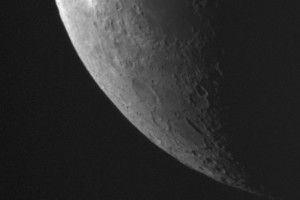
Southern part of waning crescent Moon imaged at 16:24 UT, 13 August 2020. Celestial north is up, east is left in this and the Venus image. |
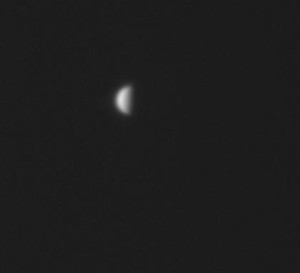
Venus imaged at 16:37 UT, 13 August 2020. |
August 12, 2020
Solar activity is slowly increasing even as one decaying active region begins to depart the Earth-facing part of the solar disk, carried along by the sun’s own 25-day rotation. Little is left of AR 12770 as can be seen in the first image, with the locations of the two active regions, along with what’s left of a northern filament, shown. X-ray activity was very low today, with little variation. After the daily mosaic of images was collected, focus turned on the visible active regions and filaments, depicted in the images below. The new regions on the southeast limb may be heralding a renewed period of elevated solar activity. Based on their magnetic polarity pattern and high latitude, these are Cycle 25 sunspots, meaning they are members of a new solar cycle that began late last year.
Celestial north is up, east is left in each of the below images.
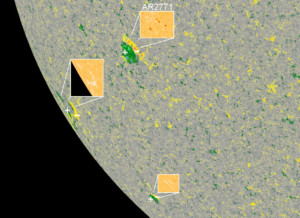 This is a Solar Dynamics Observatory image of the emerging activity on the Sun’s southeast edge. The orange rectangles are sections of a white-light image that show the bright and dark areas associated with each region. The background image s a magnetic map showing positive polarities in yellow and negative polarities in green. The image comes courtesy of NASA and spaceweather.com.
This is a Solar Dynamics Observatory image of the emerging activity on the Sun’s southeast edge. The orange rectangles are sections of a white-light image that show the bright and dark areas associated with each region. The background image s a magnetic map showing positive polarities in yellow and negative polarities in green. The image comes courtesy of NASA and spaceweather.com.
August 11, 2020
Skies were transparent and haze-free but the cumulus clouds proved more of a nuisance during this longer observing period, spanning 3 hours. The sky was variably cloudy, from mostly clear at times to mostly cloudy at others. The main focus continued to be the decaying active region NOAA 12770 as it begins to rotate away from our view and shrink in size. The two other active regions’ remnants are rotating out of view: 12768 is on the solar edge and cannot be easily observed, and 12769 is seen as a few remnant plages. Most of the earlier filaments have dispersed and there are a few prominences along the limb.
After collecting images for a full-disk mosaic, attention turned to AR 12770 which was producing a B2-class sub-flare. It had been flaring with relatively small flares (except for a larger C1 over the past weekend) and a pair of 7-minute optical events within a much longer, 45-minute X-ray event occurred. The former was largely missed due to being on a prominence, then being hindered by clouds; however, the second optical event was captured in its entirety. The images below show the region before the event (15:22 UT), the region in continuum red light (16:26 UT), and the region one minute after the 16:59 UT flare peak. The flare shows up as the bright spots in the image. The last image, obtained at 16:39 UT, shows a prominence on the northeastern limb. This was processed a bit with wavelet processing to bring out details on both the prominence and the Sun’s disk. The double-edged appearance is due to the presence of the chromosphere layer, which is made visible by the H-alpha system.
Each of the images span 14.4′ wide by 9.6′ tall and are oriented so that celestial north is up, celestial west is right.
Solar prominence as imaged at 16:39:52.
August 7, 2020
Weather remained mainly clear and hazy during the observing window, with fair-weather clouds increasing throughout the 2.5 hour interval (merely changing the sky from mostly clear to partly cloudy). The parade of active regions and remnants continue across the Sun, with only one of the regions retaining its spots. AR 12770 was monitored during this time. It consists of one large leader spot and three small attendants trailing the leader. Although no flares have been seen or have been produced from this region, there were other types of activity being monitored to include the appearance of dark streaks in H-alpha. One such streak was observed to appear ahead of the spot and change somewhat before disappearing some 20 minutes later.
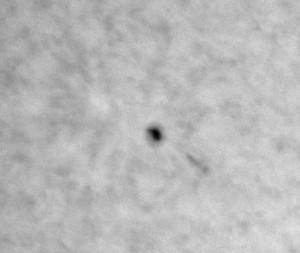
16:47:29 |
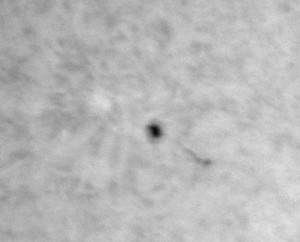
16:52:43 |
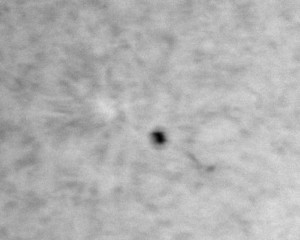
16:56:23 |
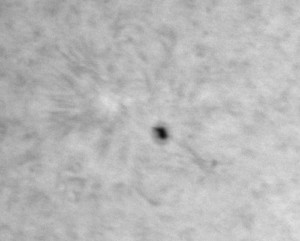
16:59:06 |
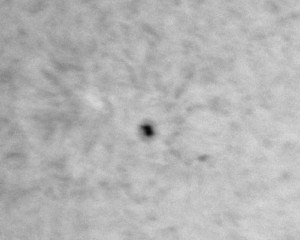
17:08:32 |
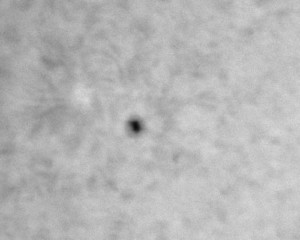
17:15:02 |
Each of the above images are 9.4’x7.5′ in size.
The overall change during the observing interval is seen below. The first and last images depict AR 12770 along with any subtle changes associated with this region. The middle image is a red continuum image, a proxy for white-light imaging of the active region. The first image contains part of the remnants of AR 12769. There were no prominences (except for one on the southwest limb) and two main filaments (northern and southern, with the southern one disappearing completely by 22:36 UT. visible on the H-alpha solar disk this morning. Real-time full-disk H-alpha images are posted continuously at the National Solar Observatory GONG Network Website http://halpha.nso.edu/.
August 5, 2020
Weather remained mainly clear and hazy during the observing window. Solar activity remains low, and we continue to monitor the active regions, filaments and prominences visible on the Sun’s disk. One change made in the process was to rotate the camera 90 degrees so that the wide dimension of the CCD chip is along the E-W line. At certain positions of the telescope this makes the camera a bit less stable but it increases the quality of observations as active regions tend to become elongate east-west as do filaments. The primary region is NOAA 12770 which is beginning to decay a bit. It is lined up with two other Solar Cycle 25 regions, which have lost their dark spots and are only seen as bright plage. The filaments in the northern and southern hemisphere remain visible, and the prominence on the NE limb has vanished. The below depict the active region 12770 in red continuum, H-alpha (at 6563.5 Å), and the remnants of AR 12760 in H-alpha (at 6563.0 Å). Each image is 14.4′ wide by 9.6′ tall except for the third, which is 10.9′ x 9.6′. Seeing was fairly good during this time.
August 4, 2020
The main focus of today’s observing session was to monitor the behavior of AR NOAA 12770. This region is shown in three (slightly) different wavelengths in the first three images: The first image in H-alpha band center, the second off band (a proxy for white light imagery) and the third in the red wing at +0.5 Angstroms. The fourth image is stretched to reveal a nice prominence display on the northeast limb. The fifth shows a filament faintly visible stretching across the solar disk. The sixth image is a full-disk image from Big Bear Solar Observatory (BBSO) to show context for today’s images.
Overall, solar activity remains very low and any active regions that appear remain small and short-lived. As seen in the BBSO image at far right, there are three bright areas that represent three distinct regions. The long white strand just right of top center is the plage that was AR 12768. I saw one tiny spot this morning around 15:00 UT during daily visual sunspot counts, but otherwise all that is left of this region is a long string of bright plage. The other areas closer to the left edge are AR’s 12769 and 12770. The former’s spot was not visible during this morning’s spot count, but the former showed a bit of a bipolar spot structure, the largest seen in quite a while. The spot that was followed last week, AR 1267, has rotated out of Earth-based view.
We are seeing an increase in filament and prominence activity as is seen in the BBSO image and the prominence image, 3rd from right. As the Sun becomes more active, we will begin to see these features with more frequency and occasionally these features become eruptive, producing explosive solar flares. The filaments and prominences visible today are known as quiescent features, which have little probability of significant activity.
Each of the above images is displayed so that north is up, east is left, and they cover a rectangular region that is 14.4′ tall by 9.6′ wide, except for the prominence image, which covers an area 5.4′ x 5.7′. The Big Bear image shows the entire Sun, which has an angular diameter of 1891.9″ or 31.53′. Exposure times for the PVSO images are 0.1-second.
July 31, 2020
Since last week the active region 12767 quietly rotated across the disk of the Sun and is nearing the western edge, where it will rotate out of view in a few days. Another active region has rotated into view in the northern solar hemisphere and it is quietly making its way across the Sun’s disk. It consists of a handful of tiny spots (I counted three at 13:12UT with a 114 mm f/8 reflector at 60x) and a long train of faculae (bright spots associated with sunspot groups/active regions). There also appears to be an additional active region right on the edge of the Sun as seen in today’s images from various places.
The below images highlight the more interesting features on the sun. The first is AR 12767, the second is a look at the quiet disk center of the sun. The third image is the region of AR 12768 and it also shows a bright streak on the edge of the Sun which may indicate the next active region. Finally a nice looping prominence is faintly visible on the southeastern limb, captured here.
Celestial north is up and celestial west is right in each image unless otherwise indicated.
July 24, 2020
With the return of solar activity comes a return to observations, at least to a limited extent. One quiet active region is AR 12767 which is at a high southern latitude and is considered a Solar Cycle 25 (the new solar cycle) spot since it appeared at high latitudes (as new cycle spots usually do) and has a reversed magnetic polarity compared with the Cycle 24 sunspot groups. This particular spot appeared on the limb two days ago and is rotating into view but staying quiet, appearing as a single large spot with accompanying plages (white areas) and filaments. While carrying out the routine observations, I found a second active region in the process of emergence, near the solar equator and close to the celestial east limb. The budding region is characterized by bright plages and is currently unnumbered. Looking at the magnetic field map, it appears this particular region is an old Cycle 24 spot, with a low latitude and polarity that matches the older spots.
The first solar image below was taken at Big Bear Solar Observatory in California at 17:16 UT, in H-alpha. This was at the same time as the local observing session which, though hindered some by convective cumulus clouds, was successful. Observations ran from 17:03 UT (12:03 pm CDT) through 18:37 UT. The main focus was the two active regions, plus one set of mosaic images were acquired. The quiet northern edge of the Sun, taken in image at 17:21:36 UT, shows the prominent lack of activity. The image is roughly 10′ x 10′ square. The image to the right shows the two active regions: AR 12767 is the single dark spot lower right and the new unnumbered region is along the left edge, just above center. This image is presented with celestial north up and celestial east left, and covers a region 9′ wide x 14′ tall.
One of the primary purposes of the observing program is to monitor these regions for activity. The plot from the NOAA Space Weather Prediction Center, is a 6-hour log of the X-ray flux level in geo-synchronous orbit. Spikes in the plot indicate explosive events on the Sun, known as solar flares. The peak near the center of the plot occurred at 17:32 UT, right in the middle of today’s observing session. The source region is likely the newly emerging active region, but unfortunately the Sun was hidden behind clouds for our location for the duration of this event, plus we were imaging other parts of the Sun at the time. In the future, when regions become more active, we will focus more intently on the more complex regions to record flaring events, great and small, from start to finish. These plots, updated in real time at the website, will help in the future as we monitor these regions for activity.
The planet Venus is now a prominent morning “star” one month and 21 days past inferior conjunction. Only a quick image, uncalibrated and not as well focused as it can be, was possible due to increasing clouds at the time of the image, 18:35 UT. The planet has waxed into a thick crescent and has shrunk in apparent size.
June 18, 2020
With the sun presenting a blank face again today, attention was focused on the three prominence displays around the limb of the Sun. The largest of these is a hedgerow prominence on the southwestern limb of the Sun (first two images) that continues to be active. Opposite this, on the northern limb appears to be some new activity (second two images). Finally the eastern limb still shows the spiky prominences that were present yesterday (lower left image). These were taken during an observing session today that involved obtaining a series of images to make up a mosaic of the Sun’s disk. For context, one of today’s full-disk images from Big Bear Solar Observatory is provided. For all images, north is up and east is left and each were taken in the light of hydrogen-alpha.
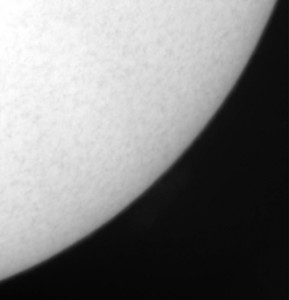
16:43:39 UT |
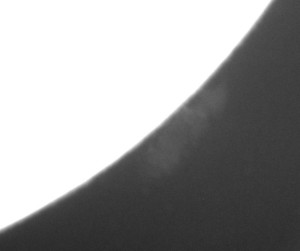
16:43:39 UT |
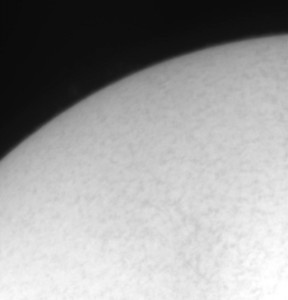
16:40:02 UT |
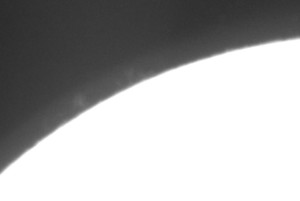
16:40:02 UT |
16:37:12 UT (left image); and 15:53:01 UT (right, full disk image)
No filaments and very little place activity were noted on the solar disk today.
June 17, 2020
The Sun is once again quiet and spotless but some prominence activity has been noted on the east southeast, north northeast and southwest edges of the Sun. After the mid-day mosaic images were captured these were followed for about an hour and each appear quiescent (that is, lacking significant activity and not changing much over the short term). The largest of the displays is on the southwest limb of the Sun and is detailed below. Each of the sample images below was obtained this afternoon and were made in H-alpha on centerline. Seeing was good during this imaging run.
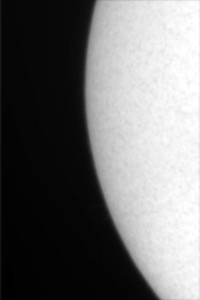 East limb of Sun at 17:35:38 UT East limb of Sun at 17:35:38 UT |
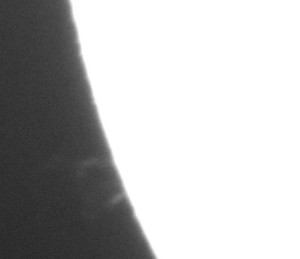 Detail of prominence activity on east limb of Sun at 17:35:38. Detail of prominence activity on east limb of Sun at 17:35:38. |
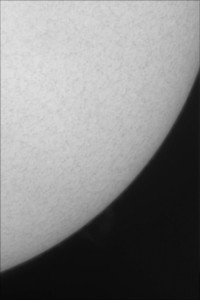 Southwest limb of Sun at 17:21:51. Southwest limb of Sun at 17:21:51. |
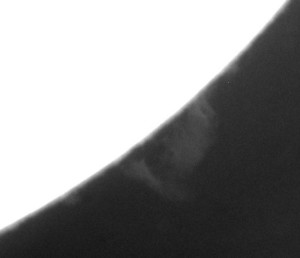 Detail of prominence activity on southwest limb of Sun at 17:21:51. Detail of prominence activity on southwest limb of Sun at 17:21:51. |
These prominences will be monitored further tomorrow during the daily observation session.
June 16, 2020
With AR 12765 rotated out of view, the Sun is once again featureless. Typical quiet-sun appearance is shown in the sample images of the southern edge (left-most) and the east-northeast edge (center image). A check for prominences around the limb yield nothing. So the Sun continues in solar minimum mode. The recent active region that just exited the Sun’s disk as seen from the Earth is a Cycle 25 sunspot group. This is evident in (1) the magnetic polarity pattern and (2) the high solar latitude the spot appeared at. This was not the first such spot group, there had been several earlier this year. Each of the sun images below were made with a 0.09 second exposure through a Meade 16-inch stopped down in aperture by the energy rejection filter; the images were made in hydrogen alpha centerline emission (6562.8 Angstroms).
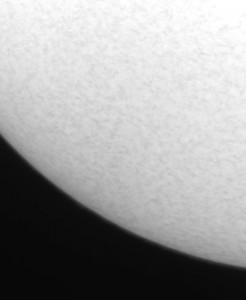 South-southeast part of the solar disk, imaged at 16:38 UT South-southeast part of the solar disk, imaged at 16:38 UT |
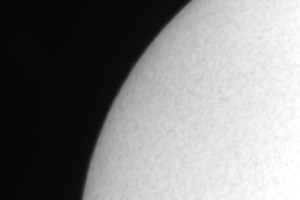 East-northeast part of the Sun’s disk, imaged at 16:31 UT East-northeast part of the Sun’s disk, imaged at 16:31 UT |
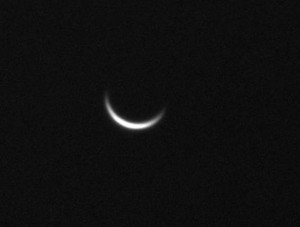 Crescent Venus imaged at 17:08 UT Crescent Venus imaged at 17:08 UT |
Venus (right-most) was high overhead during this morning’s observing session. It is 13 days past inferior conjunction and is re-appearing
June 15, 2020
Regular observations have resumed in the East Dome of the Observatory, with the issue regarding the south half of the Astrohaven dome resolved for now. Since the Sun passes nearly overhead these days, the south flap of the dome is not needed.
Solar activity remains very low but there are signs of renewed activity. A new active region, whose magnetic polarity indicates it to be a Solar Cycle 25 spot, just crossed the solar disk and is departing over the southwest edge of the Sun. It was well developed and fairly active when it first appeared some ten days ago, but it quickly became a single, quiet spot. The rest of the sun is virtually featureless.
The below observations were made with the Meade 16-inch, Daystar H-alpha filter and SBIG STT 1603 camera. Images were dark-subtracted upon acquisition, then later bias- and flat-field corrected within MaxIM DL. The images are oriented so that celestial north is up and celestial west is right. The images are 14-arc-minutes tall x 9 arc-minutes wide. Exposures of each were 0.09 seconds and the prevailing atmospheric seeing was fair.
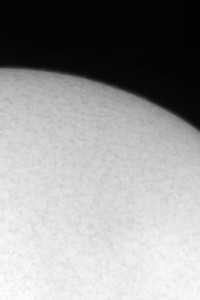 |
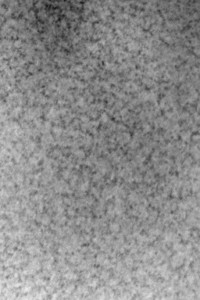 |
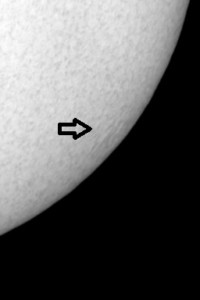 |
| North limb of Sun, taken at 18:44 UT | Near center of Solar disk, taken at 18:45 UT | Remnants of AR 12765 (indicated by arrow), taken at 20:17 UT |
=============================================================
We have resumed solar observations at the Prairie View Observatory. The equipment used includes a Meade 16-inch Cassegrain telescope, equipped with a Daystar 0.3-Angstrom H-alpha solar filter and energy rejection filter. The detector is an SBIG STT 1603 camera with a neutral density filter in front to lower the incoming light intensity by 90%. An energy rejection filter is placed over the aperture of the telescope to significantly reduce the light and heat that enters the tube.
Up to this point, solar observations have been limited due to equipment issues and the very low activity of the Sun. On 8 January 2020, a small sunspot group (NOAA 12756) developed on the northwestern limb of the Sun and provided an opportunity to test out our modified system. Solar activity has and will continue to be very low for the foreseeable future but the next solar cycle, Solar Cycle 25, has begun and should result in a return of sunspot groups and an increase of activity later this year.
Some useful websites that track solar activity and space weather include:
- www.spaceweather.com, which contains news and information about the Sun-Earth environment
- https://www.swpc.noaa.gov/, the branch of the U.S. National Oceanic and Atmospheric Administration, which monitors the Sun closely and produces space weather forecast products for public and industry
- https://www.swpc.noaa.gov/news/solar-cycle-25-forecast-update provides a detailed update to the level of activity in the upcoming Solar Cycle 25
- www.bbso.njit.edu the Big Bear Solar Observatory homepage
- http://www.bbso.njit.edu/cgi-bin/LatestImages contain the latest images in the form of full disk intensitygram, magnetogram, and hydrogen-alpha images.
Images as they are produced will be shared below, with the most recent date at the top and moving back in time the further one goes down the page.
March 10, 2020
Clouds broke up by mid-afternoon to allow some observation of the Sun including imaging attempts at a fading active region. The images below are shown with north up and west left, including the full disk Big Bear Solar Observatory H-alpha image at left. An active region, AR 12758, appeared on the Sun over the past weekend and hosted as many as 8 spots (visual sunspot observation the afternoon of 8 March 2020) but has decayed considerably. Images were obtained between the clouds this afternoon and a rough mosaic was obtained.
March 6, 2020
Quiet sun conditions continue as morning observations commence. An earlier visual inspection of the white light solar disk revealed no sunspots, only blank surface. This is the 33rd consecutive day that the Sun has been spot-less. The current observing program on days when solar activity is very low is to take a series of images in north-south strips to form a mosaic, the individual pieces of which can be assembled to form an image of the entire sun. Three of the best images obtained this morning are shown below. They have been calibrated and sized to fit this page.
Observations will continue in this mode while the Sun persists in its quiet state.
March 5, 2020
After a number of days of cloudy weather, skies locally have once again cleared out to reveal a Sun whose activity once again is very low. As seen with a small telescope equipped with a white light filter, the Sun’s disk appears blank. This is the 32nd consecutive day that the Sun has been spot-less. The current observing program on days when solar activity is very low is to take a series of images which can be pieced together to form an image of the entire sun. This mosaic run of images starts at one end and produces vertical strips that eventually cover the entire solar disk Two pieces of mosaic are seen in the first two images. The first is an image of the east-southeast edge of the Sun. The center was taken from a location near the Sun’s disk center. The large ripple effect is an artifact of the processing. Finally, at the time of observation the planet Venus was high overhead. The image at right is a 2x enlarged image showing the planet’s waning gibbous disk. As the weeks and months pass, the planet will continue to wane in phase and grow larger in apparent size. Check back to see how this plays out between now and late May.
Observations will continue in this mode while the Sun persists in its quiet state. The Space Weather Prediction Office forecasts solar minimum to occur in April 2020, plus or minus 6 months. No prominences were seen anywhere on the solar limb during this imaging session.
February 28, 2020
The quiet sun phenomena continues for the 26th day in a row as only a few filaments (which show up very faint with our current setup) and a prominence are observed. There are no sunspots/active regions visible on the Earth-facing side of the Sun. The below images each display a frame roughly 9 x 9 arcminutes (cropped from the 14×9 arcminute original image format) and are oriented so celestial north is up, east is left.
February 26/27, 2020
Observations continue under very quiet sun conditions. Images shown below were obtained the morning of the 27th of February and show the Sun being very quiet with no outstanding features to note. The three snapshots, taken as part of the morning mosaic sequence of observations, show a typical “dormant” H-alpha Sun. Each image has been rotated so that north is up and trimmed to remove processing artefacts from one end.
|
Image of east limb of the Sun, taken at 16:22:42UT.
|
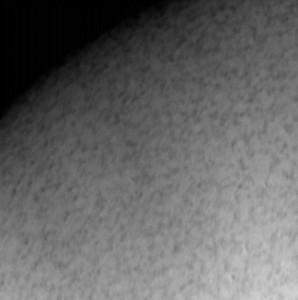
Northeast quadrant of the Sun at 16:28:38UT. |
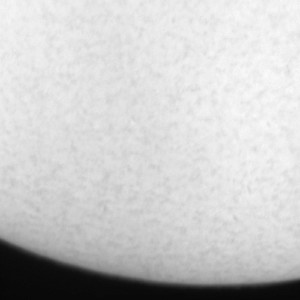
Southern part of Sun’s disk as imaged at 16:35:12UT. |
In addition to solar imaging, some images of the moon and the planet Venus were obtained later that afternoon. For these images, the H-alpha filter was removed, the neutral density and energy rejection filters were left in place, and the telescope re-focused to image these objects. Sky flats were obtained and the below images were calibrated with basic processing (dark and bias subtraction and flat field correction.
February 25, 2020
Quiet sun and not so favorable weather have hindered observations until today, when a string of favorable weather begins. However, the Sun remains very quiet, as can be seen in today’s Big Bear Solar Observatory image just below.
The Sun remains quiet as it continues through solar minimum, being spotless for 23 days running…
The four images above were made with the Meade 16-inch / H-alpha / SBIG camera imaging train setup in the East Dome of the Prairie View Observatory. and have been calibrated using the standard process. Flats were dithered images of the Sun’s central regions combined and averaged.
February 14, 2020
The Sun remains quiet as it continues through solar minimum, being spotless for 12 days running. The images below were made with the Meade 16-inch / H-alpha / SBIG camera imaging train setup in the East Dome of the Prairie View Observatory. Each was dark and bias subtracted and flat field corrected before displaying below. Exposure time is 0.09 seconds. North is up and east is to the left in each of the four images below. Solar observations were carried out in two sessions today, one in the morning and one in the afternoon. The north, east, south, and west limbs were imaged as was the disk center. Using the focus utility of TheSky X (the controlling software for our observations) along with the inverted image (black Sun, white sky) I looked around the edge of the Sun’s disk for prominences and found none. So the Sun continues to be very quiet.
February 6, 2020
The Sun remains quiet as it continues through solar minimum. Observations of many parts of the solar disk were obtained, including a small prominence on the northeast limb and several locations where filaments have been imaged earlier. The first image is a full disk image from Big Bear Solar Observatory taken at 21:41 UT. It provides context for the regional images obtained locally. Each of the four images below the BBSO image was obtained with the SBIG STT 1603 camera holding neutral density filter and affixed to a DayStar H-alpha solar filter set at line center. The images were dark subtracted, bias subtracted and flat-fielded with MaxIM DL before being stretched for optimal viewing. North is up and east is to the left in each of the below images.
Seeing was fair at PVSO with windy conditions and mostly clear skies at the time of the observations. An earlier sunspot observation in white light with a 114 mm reflector and white light solar filter documented a sunspot number of 0, and the current streak of spotless days is four as of today.
January 28, 2020
Most of the day was overcast but after 2 pm local time the skies began to slowly clear, being suitable to observe by 4:00 pm. The primary purpose of today’s observations was to obtain followup images of AR 12757. I observed on large spot and two tiny, secondary trailing spots during the daily sunspot count session at 22:07 UT (4:07 pm CST). This region is definitely decaying and has not produced any flares for the duration of its lifespan. The plage that was once AR 12755 on a prior rotation, visible earlier this month, continues to make its way onto the solar disk, showing little more than a vague patch of bright.
Solar activity remains very low. Monitoring of this active region will continue on a daily basis as long as the weather allows and until it rotates out of view in a few days. This will likely be done for a short period of time each day the weather cooperates. Solar minimum is expected to occur sometime around April 2020 with the activity then slowing increasing towards a 2025 maximum similar in peak to the last maximum.
Both images above were obtained from the East Dome of the Prairie View Observatory. The exposures were each 0.1 seconds and were dark-subtracted on site, then later flat fielded and bias-subtracted then rotated so that celestial north is up and west is to the right. A 90% blocking neutral density filter is employed just in front of the camera to cut down on the light. The Sun’s center was used for flat fields, with the frame dithered slightly (1 to 2 arc minutes) between each of five exposures. The camera is an SBIG STT 1603 CCD camera, the telescope is a Meade 16-inch f/8 Cassegrain, and the filter is a Daystar H-alpha 0.3 A filter.
January 27, 2020
Most of the day was overcast but after 3 pm local time the skies began to slowly clear, being completely clear by 4 pm. Active Region NOAA 12757 is near the center of the Sun’s disk and is derived from previous Solar Cycle 24 due to its low latitude and magnetic polarity. Near the southeast limb is a cluster of bright patches/faculae/plages that was once NOAA 12755, a small spot group from Cycle 25 that made an appearance on the prior solar rotation earlier this month. Both of these areas were monitored briefly and show up nicely on the Big Bear Solar Observatory Contrast Enhanced Full-Disk Solar Image (below). AR 12757 is the bright complex just right of center, and old AR 12755 is toward the edge of the Sun, the bright spot in the lower left part of the image.
Representative images of the two active regions appear below. The first two are Active Region NOAA 12757 a small group that appeared last Friday the 24th and peaked in size and complexity yesterday (Wolf number of 23 as I observed them yesterday) and appears to have begun its decay today. The last image is the east-southeast limb of the Sun looking for the returning AR, which is barely visible in the image center. Seeing (air steadiness) has been fair to good this afternoon.
Today’s sunspot number (as counted by myself, Brian Cudnik, with a 4.5-inch f/10 reflector, 45x magnification) 15, down from 23 yesterday. Observations will continue of this active region so as long as the weather allows.
January 24, 2020
After a string of cloudy to mostly cloudy days and a 12-day stretch of no sunspots on the solar disk, there appeared this morning (15:16 UT, observed visually in white-light and counted as two spots in one group) a small feature which was targeted for observations today. This is the only notable feature easily acquired; the rest of the sun’s disk is free of (or mostly free of) spots, filaments and prominences. Solar activity remains very low. Observations commenced for a few hours today: one session in the morning and one session in the afternoon hours. The small spot group was the main target, with the limbs of the Sun being secondary targets.
The setup featured a Meade 16-inch with energy rejection filter, 0.3A H-alpha filter, and an SBIG 1603 CCD camera with 0.9 ND filter (neutral density filter absorbing 90 % of the incident light). Each exposure was 0.1 seconds. Image processing was simple calibration: dark subtraction on site followed by bias subtraction and flat field correction away from the site. The flat fields were taken from images of the solar disk center
Each was taken with the setup in the East Dome. North is up and East is left in each picture.
The south-southeast limb of the Sun shows a typical quiet Sun appearance: no prominences or filaments or active regions. The rest of the Sun has a similar bland appearance.
January 8, 2020
Each was taken with the setup in the East Dome. North is up and East is left in each picture.
This (above) is the full-disk H-alpha image from Big Bear Solar Observatory that was obtained around the same time as the above images. This shows how quited the Sun’s disk is presently. The active region that was imaged above appears as the bright spot in the upper right hand corner. Two small filament sections (which we imaged) appear in the bottom part of the image. In future observing sessions (until we have our own operational full-disk setup) we will use these full-disk images to plan our own observations.

